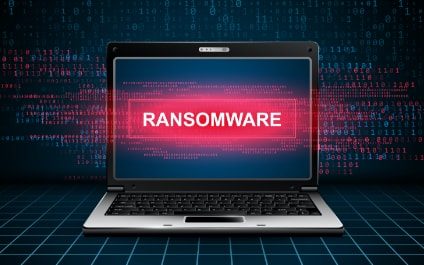
Introduction
Ransomware continues to be one of the biggest threats that businesses are facing today on the internet. Simple things like clicking the wrong link can set off a sequence of events that can end in all your data being encrypted. With the advancement of technology and artificial intelligence, cyber-criminals are also advancing in the way that they attack and hold data ransom. It is crucial for your business to try and implement as many secure initiatives as possible, so ransomware attackers have a challenging time getting in your network. Here are five best practices that you can take to minimize future ransomware attacks on your data.
1. If you do not have an anti-virus software, get one now!
This seems obvious; however, many small businesses tend to neglect this concept. If your business does not have an antivirus software, ensure you get it as soon as you can. Today, many anti-virus programs offer ransomware-spotting features that focus on detecting suspicious behavior that’s common for ransomware such as encryption. These applications/ programs are designed to specifically monitor files for encryption. Another important proactive measure is to have a data back up and disaster recovery plan in place so in the event of a data breach, your data is backed up on a regular basis and minimal damage is done. A business without an antivirus is like a house with an open and unprotected door. Similarly, your computers that are unprotected are an open gate for an influx of malware, ransomware and more. An anti-virus program is a security guard for your computer and will protect your network and data from them. Without the antivirus, if your computers are attacked, the following will most likely occur encrypted files, data loss, inability to perform tasks, slow computers and more.
2. Scan and filter emails before they reach your team
One of the easiest ways to prevent staff from clicking on ransomware links it to filter emails so they never reach their inbox. Introducing things like content scanning and email filtering will take care of many phishing and ransomware scams before they reach your team. Spam filters work in two ways. First, the spam filter will capture a message and isolate it. Spam messages are usually sent out in email blasts and will always try and sell a service or product. Common email service provider such as Outlook, Yahoo and Google typically include a “Spam folder” where users can review the junk email before moving it to their inbox.
3. Apply software patches to keep your network updated
Patching software is a painful, tedious and a time-consuming job. However, it is vital to your network and its security. Hiring an IT managed service provider that specializes in ransomware solutions can help your business stay protected because they will be doing all the regular patch updates. Far too often, employees will skip a software update because they do not want to take a few minutes of their time to update it because they do not understand its importance. However, when employees do not update the security patches, it leaves the door open for hackers to access sensitive data. This then puts your company at risk of a downtime, data theft and more.
When the security patch updates are done, it can include new or enhanced features, or to have better compatibility with new applications or devices. As such, it can improve the stability of your network and remove any outdated features that may not be as affective. Protect your business from data breaches by letting a Managed IT service provider do the software patches for you.
4. Train your staff to only download applications from known sources
A crucial thing to understand and know is that when it comes to downloading files, content, and/or applications it should only be derived from known sources. By doing so, you minimize the risk of downloading ransomware. Never ever download software, or media files from unknown websites because most likely, they will infect your computer and in some extreme cases even your entire network. A key indicator for a safe browser is to look at the address and ensure that the page you are visiting uses "https" instead of "http". A shield or lock symbol in the address bar can also indicate that the page is secure. Also exercise caution when downloading anything to your mobile device. You can trust the Google Play Store or the Apple App Store, depending on your device.
5. Get updated hardware and software because it will minimize data breaches
Many smaller businesses tend to rely heavily on out-of-date hardware because they feel like as long as it is working and getting the job done, no point in investing in new ones. Over time, ransomware attackers will catch on to this and begin to discover security vulnerabilities making it extremely easy for them to hack and hold data ransom. Essentially, an outdated software program is one that is no longer supported which means that any new-found bugs in the program are not addressed. Plus, out-of-date software becomes less and less likely to work on new hardware and remain compatible with new technologies.
As a result, this can cause business disruptions. If a device stops working or becomes infected, it can stop you and your team from completing their daily tasks. Until you can get the outdated software to work, you cannot continue business, and you risk losing the data that’s stored on the outdated program.
Conclusion
By implementing the above best practices, your business will be in a better position to protect itself against damaging ransomware attacks. The above are a guide for you and your business. If you are unsure of where to start, get in touch with a ransomware solution specialist and learn what you should do. Different businesses require secure initiatives.
Comment below if you can think of another best practice that you have implemented that has worked for you and your team.

